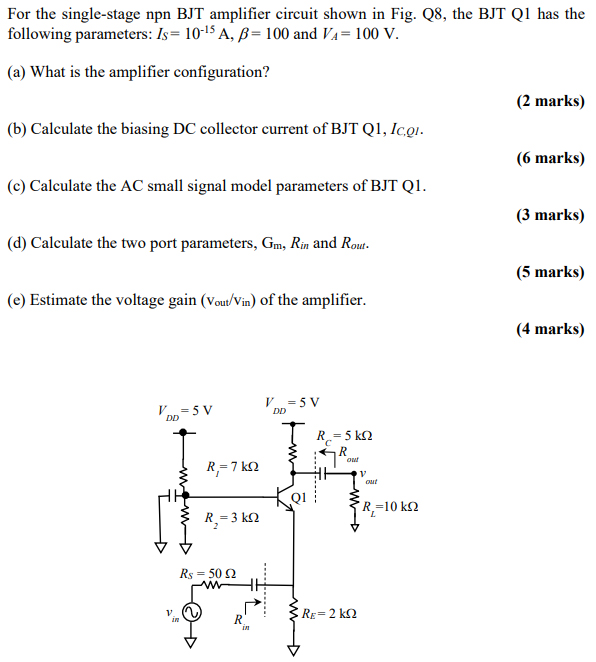For the single-stage npn BJT amplifier circuit shown in Fig. Q8, the BJT Q1 has the following parameters: IS = 10−15 A, β = 100 and VA = 100 V. (a) What is the amplifier configuration? (2 marks) (b) Calculate the biasing DC collector current of BJT Q1, IC,Q1. (6 marks) (c) Calculate the AC small signal model parameters of BJT Q1. (3 marks) (d) Calculate the two port parameters, Gm, Rin and Rout . ( 5 marks) (e) Estimate the voltage gain (vout/vin ) of the amplifier. (4 marks)
